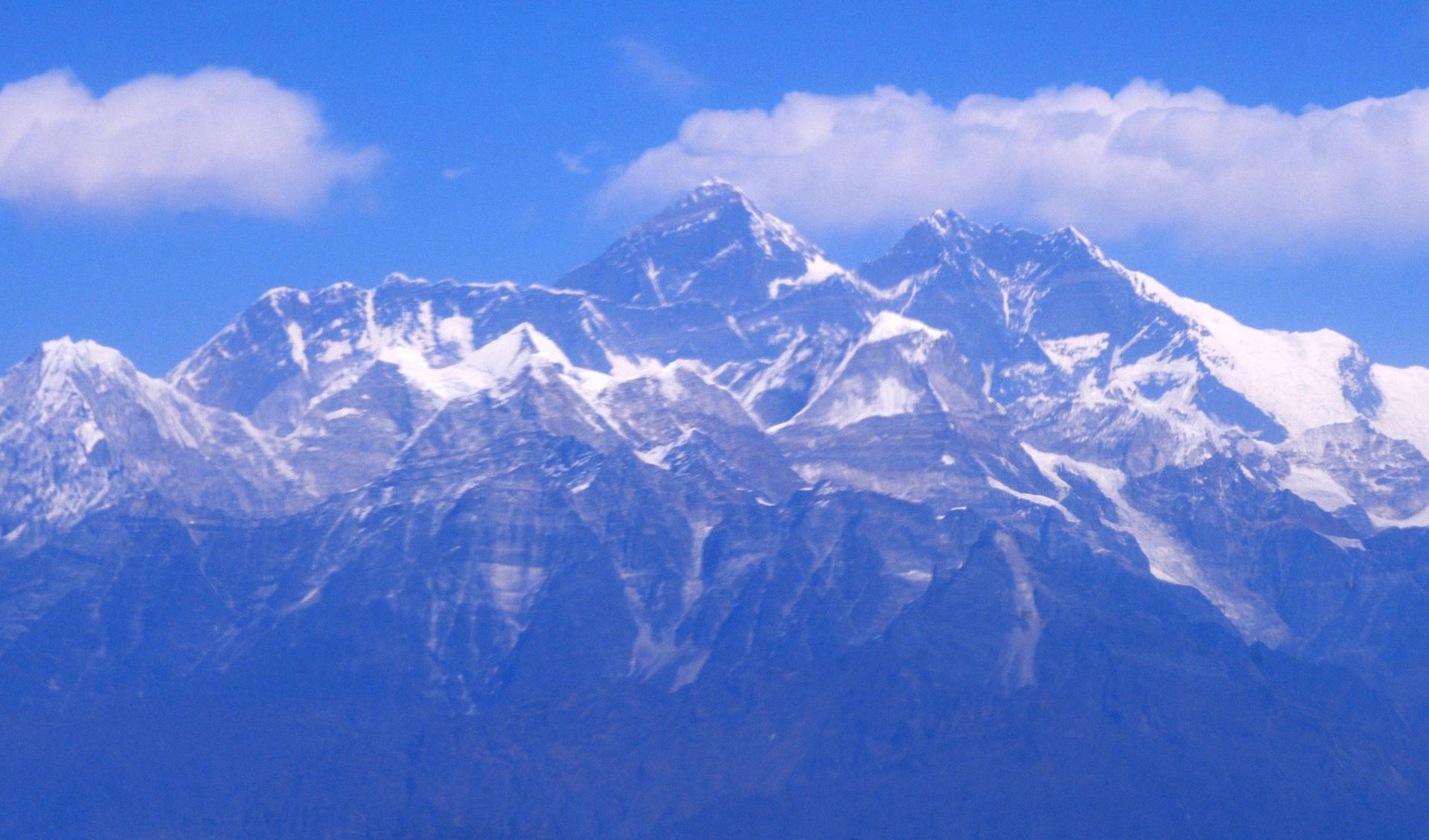Nepal: Can Sherpas compete with North Face?
Apa Sherpa, who recently won the Guinness World record for scaling Everest 21 times, says that the lack of snow on the mountain due to climate change may one day make it unclimbable.
As Nepal celebrates the 60-year “Diamond Jubilee” of the first successful ascent of Mount Everest in 1953 this week, Tashi Sherpa is celebrating an anniversary of his own.
Ten years ago, he was in the import-export business, when, as he was walking down the street in Manhattan, a magazine cover honoring Sir Edmund Hillary and Tenzing Norgay. Staring back at him from the cover was his uncle, Ang Gyalzen Sherpa, whom Tashi soon learned had been one of the porters on the historic expedition. Soon after, Sherpa Adventure Gear was born.
“When I started this brand it was a tribute to all the unsung heroes of Everest, the ones who have sacrificed years and their lives making it easier for people to climb and supporting them,” Tashi said. “Essentially, we are the story.”
The word "Sherpa" has become synonymous with the word "guide" or "porter" on Mt. Everest, though it refers to an Indo-Tibetan ethnic group numbering around 150,000 in Nepal.
More from GlobalPost: Mt. Everest: Sherpas getting a bad rap
Today, Sherpa Adventure Gear is Nepal's own answer to world famous mountaineering apparel brands like Patagonia and The North Face. And even in Kathmandu, the brand competes successfully against the Chinese knockoffs sold in the backpacker ghetto of Thamel – where a Gore-Tex shell with The North Face label costs less than a third of Tashi's made-in-Nepal originals.
“Made in Nepal – because we make 80 percent of our production in Nepal – has been one of our big assets,” said Tashi. “People love the fact that we make our stuff in Nepal. We're very original, we're very authentic.”
That hasn't been easy. Getting materials to landlocked, mountainous Nepal is costly. With poor roads and chronic electricity shortages, the infrastructure is not geared for manufacturers. And to make the high-tech apparel favored by international trekkers and climbers, Tashi spent two years just training a team of cutters and stitchers.
“At the drop of a hat, I could easily move all my allocations to Vietnam, Bangladesh, China, but having done that, I wouldn't be true to what I'm trying to do,” Tashi said.
“We try to be profitable, so that we can be more useful to more and more people. At any given time, there's more than 1000 people who are depending on us to be successful.”
Accolades have steadily rolled in. This year, Outside Magazine featured SAG's Imja ultralight shell among the 10 best jackets featured in its 2013 Summer Buyer's Guide, while other SAG products like the company's hand-knit Rani hat and Sonam baselayer top have gotten the nod in the past, not only from Outside but also Backpacker, UK Climbing and the like.
That makes the flagship store in Kathmandu a kind of mecca for outdoor gear freaks, even though everything from sandals to headlamps is available for a fraction of the price in Thamel. The reason? From branding to product design, SAG's small-volume products look cooler than the mass-market stuff, and the Sherpa name makes the company's apparel double as a souvenir from the Himalayas.
“We've managed to cover a fair part of the globe… at the last count maybe about 19 or 20 countries,” said Tashi. “But our own retail outlet in Nepal has turned out to be a great move for us.”
“It's allowed us to have a lot more brand exposure with all of the tourists and the trekkers that come to Nepal. They come through our doors, they see the products that we make, they buy it, they wear it, they go back to their country. That's been a great blessing for us.”
It's also been a great blessing for a handful of elite Sherpa mountaineers, whom SAG sponsors as professional athletes. Apart from providing mountaineers like Lhakpa Rita Sherpa, the first Sherpa to climb the world's “Seven Summits” with SAG swag to wear and test, the brand recognizes them for the feats they accomplish, sometimes as a routine part of their jobs as high-altitude guides.
“We're not a piece of fleece, we're not a porter, and I say that in all humility, without a trace of anger, because I can't expect the whole world to know who my people are,” said Tashi.
“It behooves us to tell the world who we are. That's essentially what Sherpa Adventure Gear is about.”
At The World, we believe strongly that human-centered journalism is at the heart of an informed public and a strong democracy. We see democracy and journalism as two sides of the same coin. If you care about one, it is imperative to care about the other.
Every day, our nonprofit newsroom seeks to inform and empower listeners and hold the powerful accountable. Neither would be possible without the support of listeners like you. If you believe in our work, will you give today? We need your help now more than ever!
